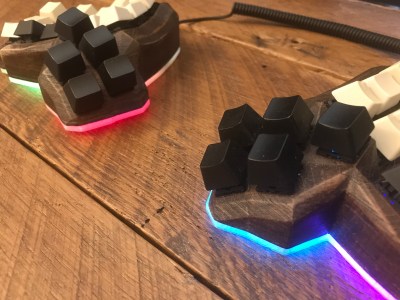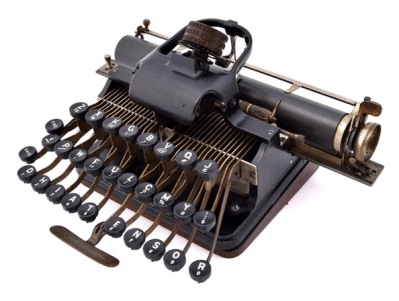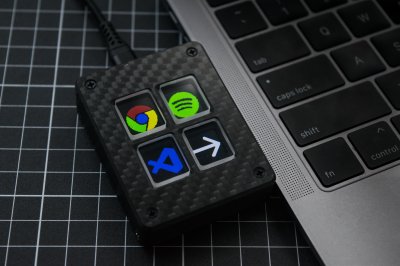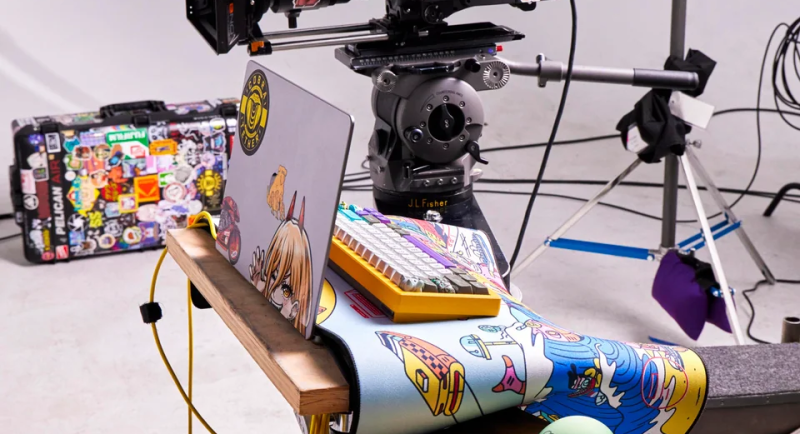
 Well, unfortunately we don’t know much yet about this nice wooden keyboard from [Kelvin Chow], but maybe this inclusion will encourage [Kelvin] to post more about it.
Well, unfortunately we don’t know much yet about this nice wooden keyboard from [Kelvin Chow], but maybe this inclusion will encourage [Kelvin] to post more about it.
Sure is nice-looking, don’t you think? That’s because there some great details at play here, like the legend-less two-tone keycaps and the neat-o locking box it sits in.
This keyboard is inspired by the Hacoa Ki-board, which uses a singles plank of wood to craft the keycaps. [Kelvin] wanted to try this technique for themselves. Evidently this won’t be the last wooden keyboard, so stay tuned for more over on Hackaday.io.
This isn’t the first dead-tree keyboard we’ve seen around here, either. A while back we saw one with Scrabble tile keycaps, and earlier this year, a nice wooden macro pad.
One Person’s Keyboard Journey
Big thanks to [quinor] for this tip. I present to you [tslil clingman]’s keyboard journey so far. I love a good progression story, as we all have them on our way to whatever we consider end game on any given day.
 It all started with an Atreus kit, which [tslil] modified with sweet-looking 3D-printed keycaps and a laser-cut case. This worked well for many years until the layout started bothering [tslil]’s wrists.
It all started with an Atreus kit, which [tslil] modified with sweet-looking 3D-printed keycaps and a laser-cut case. This worked well for many years until the layout started bothering [tslil]’s wrists.
Then it was on to the dactyl manuform mini shown here, which [tslil] printed in wood PLA and sanded to arboreal perfection. But this had too many keys, so it was back to the drawing board, or the finger-painting board as it were. This time around, [tslil] dipped their fingers in paint in order to create the perfect layout.
You’d think that would be the end game, but no. Being hand-wired, it was simply too fragile. So in the latest version, [tslil] designed their own PCBs. The particularly interesting thing here is the keymap, which was chosen algorithmically based on certain metrics. Oh, and an honorable mention goes to that art deco clock at the bottom.
The Centerfold: Just Another Day At the Office
Finally, we have a gallery centerfold, and the first picture is a teensy bit NSFW, so hold on to your hats or whatever.
Now obviously, this is not your normal office, this is a some kind of cool traveling setup. One that others can’t avoid seeing all the time. While I don’t agree with the ergonomics of this setup like, at all, I really dig that Yellow Submarine-art-meets-old-school-cartoon aesthetic of the (sold out) desk pad, and I love that [coalxxx] doesn’t give a care that it doesn’t quite fit.
Do you rock a sweet set of peripherals on a screamin’ desk pad? Send me a picture along with your handle and all the gory details, and you could be featured here!
Historical Clackers: The Blickensderfer No. 5

A couple of installments ago, I told you about the stunning Crandall New Model, which bore a removable type element sleeve that allowed the use of different typefaces.
At the time, I speculated that it was the inspiration for the IBM Selectric’s awesome little golf ball element. But between the two in time lies the Blickensderfer series with their cylindrical type elements.
Blickensderfer typewriter design radically reduced the complexity of the typewriter, bearing 250 parts compared to the 2,500 parts of the average machine.
As with all Blickensderfer typewriters, the No. 5 bore the scientifically-chosen DHIATENSOR layout. A study of the English language showed that 70% of written text and 85% of words contained the letters ‘DHIATENSOR’, and thus this became the home row, albeit on the bottom. Those who use DHIATENSOR today put it on the middle row.
ICYMI: DIY Stream Deck Takes No Shortcuts
 No, the OpenDeck isn’t a commercial product, although you can buy one from Tindie when they’re back in stock.
No, the OpenDeck isn’t a commercial product, although you can buy one from Tindie when they’re back in stock.
[Josh R] designed this to be a cheaper alternative to the various stream decks out there, and I think it looks fantastic by comparison. And based on the demo video, it works just as well as they do.
Under the hood is an ESP8266 Wemos D1 Mini V4, which is part of the spec if you’re interested in building your own. So is the screen, which must be a 128 x 160 TFT so it can line up with the frame that divides it into four. If you ask me, the carbon fiber should be mandatory as well, because that is just slick.
Got a hot tip that has like, anything to do with keyboards? Help me out by sending in a link or two. Don’t want all the Hackaday scribes to see it? Feel free to email me directly.

0 Commentaires